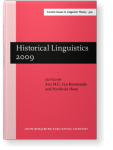The morphological evolution of infinitive, future and conditional forms in Occitan
Louise Esher | Balliol College & Research Centre for Romance Linguistics, University of Oxford
In this study I investigate the extent to which the formal identity of infinitive, future stem and conditional stem persists in a number of varieties of Occitan, a Gallo-Romance language spoken in southern France, and the consequences of these developments for diachronic morphology, in particular the concept of ‘morphome’ (Aronoff 1994) – a systematic formal regularity which is not simply due to sound change and which has no unique functional correlate.
Maiden (2005) shows that, despite significant functional divergence, Romance forms deriving from Latin perfectives consistently preserve and may even reinforce the formal identity of their stem, which now constitutes a morphome. The development of Romance synthetic future and conditional forms, deriving from Latin periphrastic constructions infinitive + habeo “I have” and infinitive + habebam “had” respectively, offers a parallel inasmuch as the initial formal identity between the stems of the future and conditional is maintained, while functional commonality between future and conditional has largely been lost.
The set of future and conditional cells now appears to constitute a distribution which has psychological reality for speakers. However, it cannot be considered unproblematically morphomic: at a functional level the semantic value of futurity is argued to be common to future and conditional, while at the formal level certain varieties of Occitan present cases of ‘asymmetry’, in which the identity between the future and conditional stems is broken. Taken together, the existence of asymmetry and possible functional commonality invite a view of morphomic phenomena which admits of interaction between the autonomously morphological and the functional.
Cited by (2)
Cited by two other publications
Esher, Louise
2014.
Autonomous morphology and extramorphological coherence.
Morphology 24:4
► pp. 325 ff.

This list is based on CrossRef data as of 23 july 2024. Please note that it may not be complete. Sources presented here have been supplied by the respective publishers.
Any errors therein should be reported to them.
